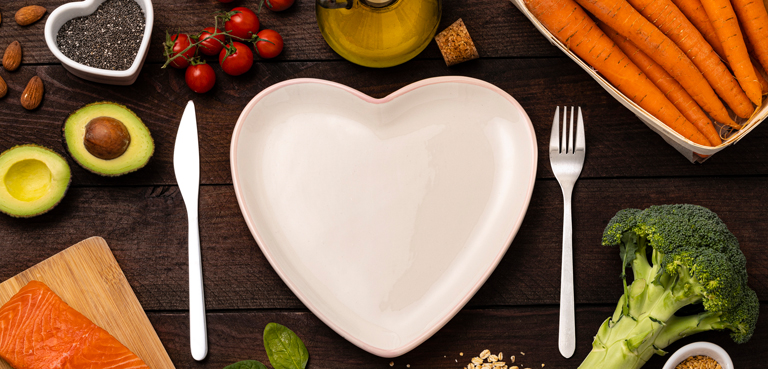If you’ve been looking for ways to improve your heart health — and especially if you have blood pressure problems — you may have heard of the DASH diet. Dr. Sudha Jaganathan, a Cardiologist at the Florence Wormald Heart & Vascular Institute at St. Elizabeth, explains the health benefits behind this diet.
What is the DASH Diet?
DASH stands for “Dietary Approaches to Stop Hypertension,” otherwise known as high blood pressure. “This diet was developed to help lower blood pressure without using medications,” explains Dr. Jaganathan. People on the DASH diet work to reduce their sodium (salt) consumption, among other healthy dietary changes.
Daily Food Intake for DASH Diet
According to the National Heart, Lung, and Blood Institute, people following the DASH diet should aim to incorporate the following into their daily food intake:
- 6-8 servings of grain.
- 6 or fewer servings of meat, poultry or fish.
- 4-5 servings of vegetables.
- 4-5 servings of fruit.
- 2-3 servings of low-fat or no-fat dairy products.
- 2-3 servings of fats and oils.
People on the DASH diet should greatly decrease their intake or avoid the following foods:
- Fatty meats, including skin-on poultry or red meat.
- Full-fat dairy products.
- Sugary foods, including baked foods, desserts and candy.
- Sugary drinks, such as juice, soda or sweetened tea or coffee.
- Tropical oils, such as coconut and palm oils.
The DASH diet shares many similarities with another heart-healthy diet plan, the Mediterranean diet. Get more tips on following the DASH diet.
Health Benefits of the DASH Diet
Many people follow the DASH diet to lower their blood pressure and reduce their sodium intake. “Too much salt makes you retain more water than you need,” explains Dr. Jaganathan. “That is the reason it can raise blood pressure numbers.” Therefore, when you eat a healthier level of salt, your blood pressure decreases. That means your heart doesn’t have to work as hard.
Weight Loss and the DASH Diet
While not its primary function, people often lose weight while following the DASH diet. That’s because it focuses on reducing your intake of fatty, fried, salty or processed foods and increasing your intake of:
- Fish
- Fruits
- Nuts
- Poultry
- Vegetables
- Whole grains
Getting Started
Making healthy lifestyle changes doesn’t have to be difficult — and you don’t have to do everything at once. Concentrate on making one new healthy swap a week, and you’ll see little changes add up.
Tips for Cooking on the DASH Diet
- Add more vegetables and fruits to your recipes and meals.
- Check the sodium content of sauces or condiments.
- Choose whole grain bread or pasta instead of white bread or pasta.
- Reduce your meat intake or trim skin from meat.
- Replace saturated fats (such as butter or tropical oils that are solid at room temperature) with unsaturated fats, such as olive oil.
Tips for Shopping on the DASH Diet
- Check out your local grocery store’s sales and buy staples when they’re on special.
- Choose “whole foods” (not processed foods) when you can, so you can cook your own meal and know what’s going into your food. This will help you avoid hidden salt and fat!
- Review all nutrition labels on processed foods.
- Stock up on frozen vegetables to add to your meals, as they pack a nutritious punch, and you don’t have to worry about them going bad as quickly as fresh produce.
- Try a no-added-sugar, oil-based salad dressing – or make your own – rather than reaching for a creamy dressing.
Get the Care You Need
Salt can be found in most of the foods we eat. Learn more about this sneaky ingredient and how you can protect your heart’s health, by visiting our Take Time for Your Heart program. If you’re ready to take charge of your diet and reduce your sodium intake, ask your primary care provider if the DASH diet is right for you.

